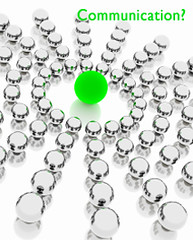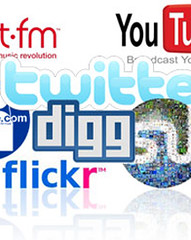After more than $258 million spent in advertising, the long-running advertising campaign that primarily employed Dr. Robert Jarvik as spokesperson for Lipitor, according to The New York Times today.
Pfizer announced yesterday that it would cancel the advertisements featuring Dr. Jarvick. Pfizer offered up a release that primarily focuses on a 3-paragraph statement from Ian Read, president of worldwide pharmaceutical operations. Here are two...
“Nevertheless, the way in which we presented Dr. Jarvik in these ads has, unfortunately, led to misimpressions and distractions from our primary goal of encouraging patient and physician dialogue on the leading cause of death in the world — cardiovascular disease. We regret this. Going forward, we commit to ensuring there is greater clarity in our advertising regarding the presentation of spokespeople.
“Raising awareness of the dangers of cardiovascular disease in the U.S. remains an urgent public health priority. Only half of all Americans who have high LDL cholesterol are even diagnosed, and just half of those are being treated. Future Lipitor campaigns, to be launched in several weeks, will continue to stress the critical importance of patients talking to their doctors so they can make informed choices about their treatment options.”
In other words, Pfizer regrets that the “misimpressions and distractions” led to the cancellation of the advertisement as opposed the misrepresentation of the spokesperson as an avid rower. Dr. Jarvick does not row and a body double appeared in advertisements.
The release goes on to reinforce the benefits of statins such as Lipitor in treating heart disease are validated in clinical guidelines. Lipitor represents $12.7 billion in sales for Pfizer.
According to The New York Times, the decision to withdraw the advertisements will have no bearing on the investigation led by U.S. House of Representatives Committee on Energy and Commerce. The committee is still collecting documents from several sources and plans to meet with Dr. Jarvik.
One of the other complaints about the advertisement came from three former colleagues of Dr. Jarvik. They said the ads erroneously identified Dr. Jarvik as “inventor of the artificial heart” as opposed to the inventor of the “Jarvik artificial heart.” Other medical professionals also complained that Dr. Jarvik does not hold a license to practice any type of medicine.

Pfizer announced yesterday that it would cancel the advertisements featuring Dr. Jarvick. Pfizer offered up a release that primarily focuses on a 3-paragraph statement from Ian Read, president of worldwide pharmaceutical operations. Here are two...
“Nevertheless, the way in which we presented Dr. Jarvik in these ads has, unfortunately, led to misimpressions and distractions from our primary goal of encouraging patient and physician dialogue on the leading cause of death in the world — cardiovascular disease. We regret this. Going forward, we commit to ensuring there is greater clarity in our advertising regarding the presentation of spokespeople.
“Raising awareness of the dangers of cardiovascular disease in the U.S. remains an urgent public health priority. Only half of all Americans who have high LDL cholesterol are even diagnosed, and just half of those are being treated. Future Lipitor campaigns, to be launched in several weeks, will continue to stress the critical importance of patients talking to their doctors so they can make informed choices about their treatment options.”
In other words, Pfizer regrets that the “misimpressions and distractions” led to the cancellation of the advertisement as opposed the misrepresentation of the spokesperson as an avid rower. Dr. Jarvick does not row and a body double appeared in advertisements.
The release goes on to reinforce the benefits of statins such as Lipitor in treating heart disease are validated in clinical guidelines. Lipitor represents $12.7 billion in sales for Pfizer.
According to The New York Times, the decision to withdraw the advertisements will have no bearing on the investigation led by U.S. House of Representatives Committee on Energy and Commerce. The committee is still collecting documents from several sources and plans to meet with Dr. Jarvik.
One of the other complaints about the advertisement came from three former colleagues of Dr. Jarvik. They said the ads erroneously identified Dr. Jarvik as “inventor of the artificial heart” as opposed to the inventor of the “Jarvik artificial heart.” Other medical professionals also complained that Dr. Jarvik does not hold a license to practice any type of medicine.

















